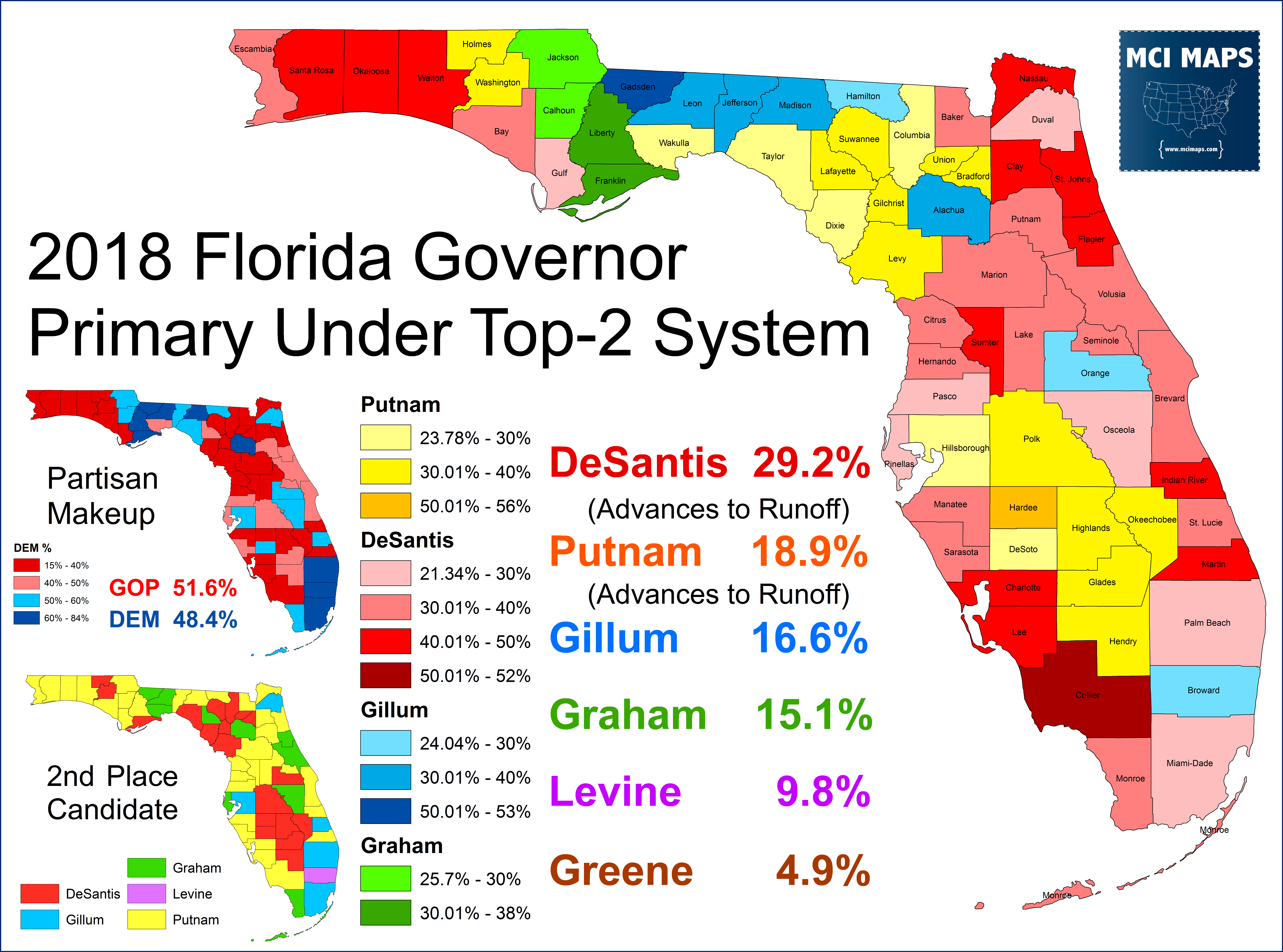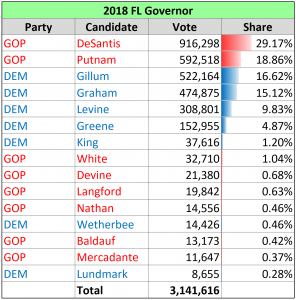I have already written twice about Amendment 3, a proposal on Florida’s November ballot. This proposal, if passed, will bring California and Lousiana-style “Top-Two” primaries to Florida. For those unfamiliar, this means the August primaries would see candidates of all sides run on a single ballot line and the top two, regardless of party, makes the runoff. I have already written about the damage this would cause to minority voting strength, and the dishonest campaign the Pro-3 side is engaged in. For this article, I wanted to dispel a myth being pushed by those supporting top-two.
The 2018 Gubernatorial Election
One issue I and others have pointed out as a flaw in the top-two system is that in 2018, it would have resulted in a DeSantis v Putnam runoff. Despite both parties nearly casting the same number of votes, the larger split in the Democratic field would have led to both major republicans advancing.
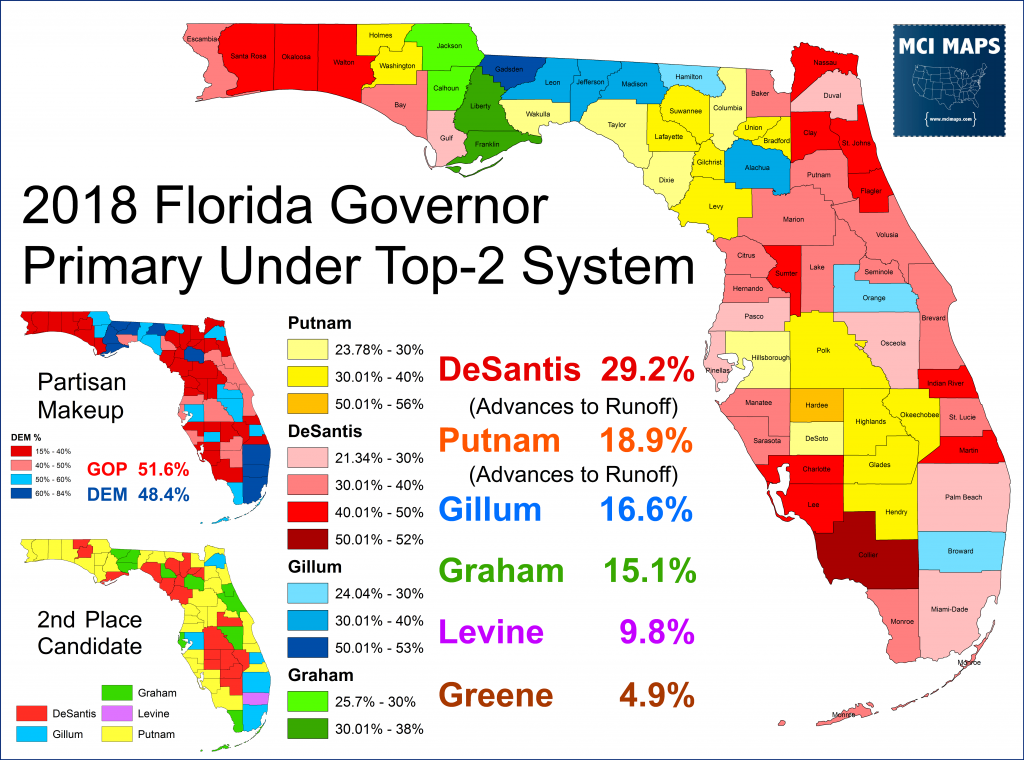
Gillum, who would engage in a narrow and tough fight for the general election, would have finished 70,000 votes outside of runoff range. A GOP vs GOP runoff would have not reflected the political will of the voters; but would have been the result of one side having a larger split.
Now, proponents of Amendment 3 argue that since a top-two system would allow political independents to vote, that makes these numbers meaningless. They site the “three million independent voters” making a 70K margin worthless. Well, lets break these numbers down a bit.
Turnout Realities
We shouldn’t look at independents in terms of their registration, we should look at likely turnout. First, its worth noting many studies show registered independents are less engaged and less likely to vote – and are not a monolithic group with a united interest. On its surface, this makes sense. Its also backed up turnout data. Independent voters always trail in general election turnout compared to the two major parties. Even in non-partisan municipal races this is the case. Independents show up less. For some Florida examples, I looked at the recent Miami-Dade Mayor race and the 2015 Duval Mayor race. Both were high-profile races with huge sums spent and both sides vying to get any voter that would support them out. All voters were eligible for these races. Both saw a similar dynamic – NPA turnout half of partisan.

So seeing this dynamic, lets look at the 2018 Governor primary. Both parties had turnout in the low 30s.

Based on that those figures, we could estimate a NPA turnout of around 15%. This would have led to a raw vote total of around 550,000.
How the NPA Vote may have split
So lets throw our 550,000 independent voters into the mix. Could they have swung the election and put someone else in end place? Honestly, its very unlikely. To explain, lets look at the Democratic primary for Governor.
Andrew Gillum’s surprise win in the democratic primary came with an election day surge and a dominant share of the African-American vote. His wins were heavily concentrated in the campuses and especially African-American areas.
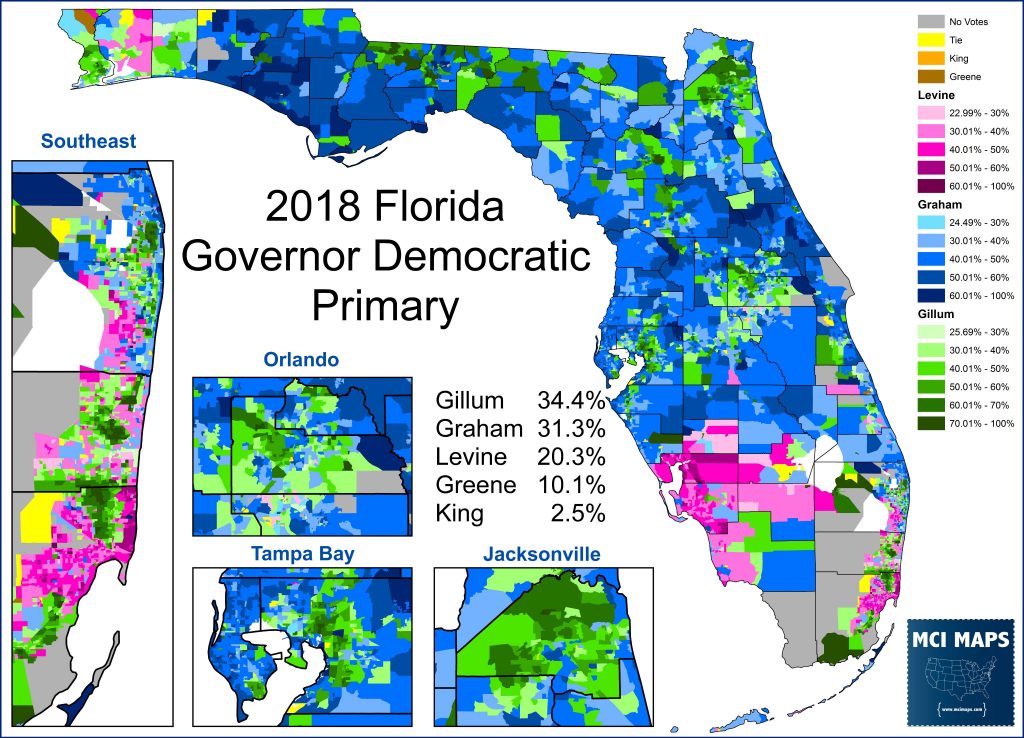
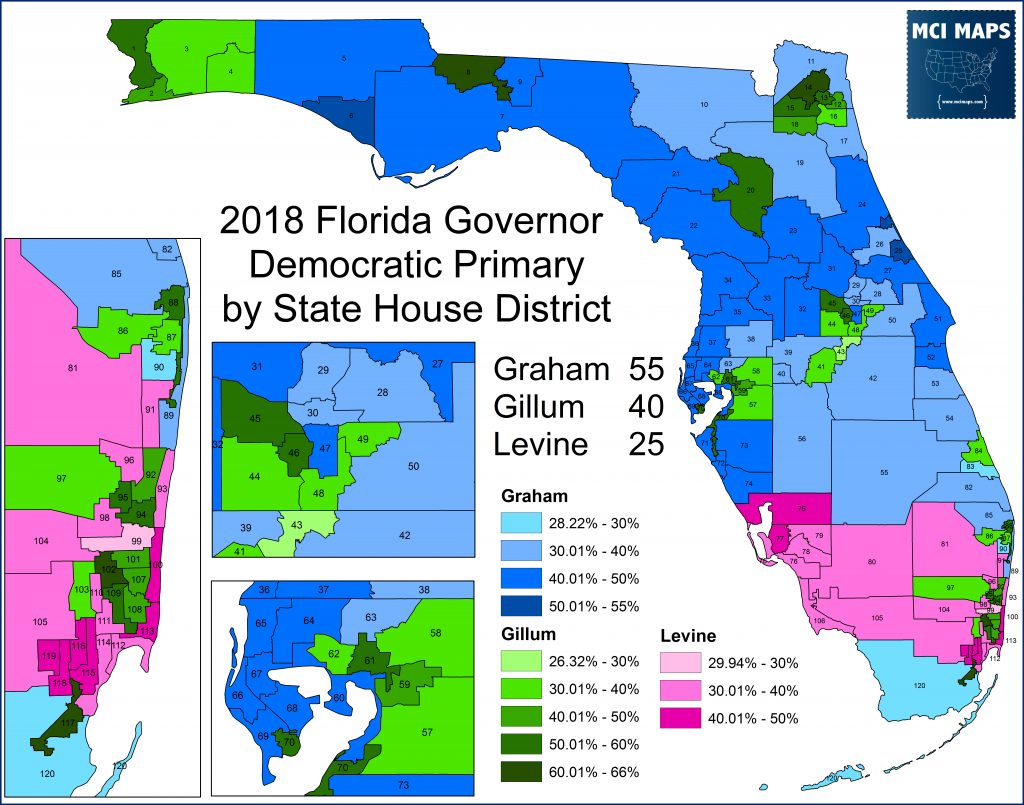
His two biggest competitors, Levine and Graham, split the larger white and Hispanic voting pools. Levine was especially strong in the southeast Hispanics and southwest whites, while Graham cleaned up with northern whites in rural, working class zones, and most suburbs
So Gillum would need 70K net votes over Putnam to get into a runoff. Is that possible? Well based on his primary numbers and the makeup of the NPA electorate, its doubtful. Here is the NPA racial breakdown.

The NPA electorate is much less African-American than the primary and heavily white. That Hispanic vote is split between Cubans, Puerto Ricans, and several other nationalities – and all elections have shown these groups have varying political allegiances and partisan leanings.
So for Gillum to win this group against his democratic colleague’s alone is tough – and its more likely Graham and Levine net more votes out of it than he does.
Now, Graham is 120,000 behind Putnam, could she close the gap? That is also especially unlikely, as both he and DeSantis will be taking conservative-leaning NPAs as well. Netting 120K out of just 550K with so many people running is a extremely unlikely prospect. Keep in mind Graham would need to get more than the 120K alone, because Putnam would for sure pull in at least a few 5-figures of those voters.
At the end of the day, no candidate would be expected to dominated the NPA block, and that block isn’t big enough to likely change the #2 rank. This means a GOP vs GOP Runoff.
Conclusion
A realistic scenario out of Top-Two voting is the risk one party gets shut out despite their being a large audience for that party. This system would force parties to actively discourage campaigns to avoid this very risk – which is something we already see in other states. In Florida’s case, the numbers are pretty clear, a 2018 General would have been DeSantis v Putnam if Top-Two existed at the time.

